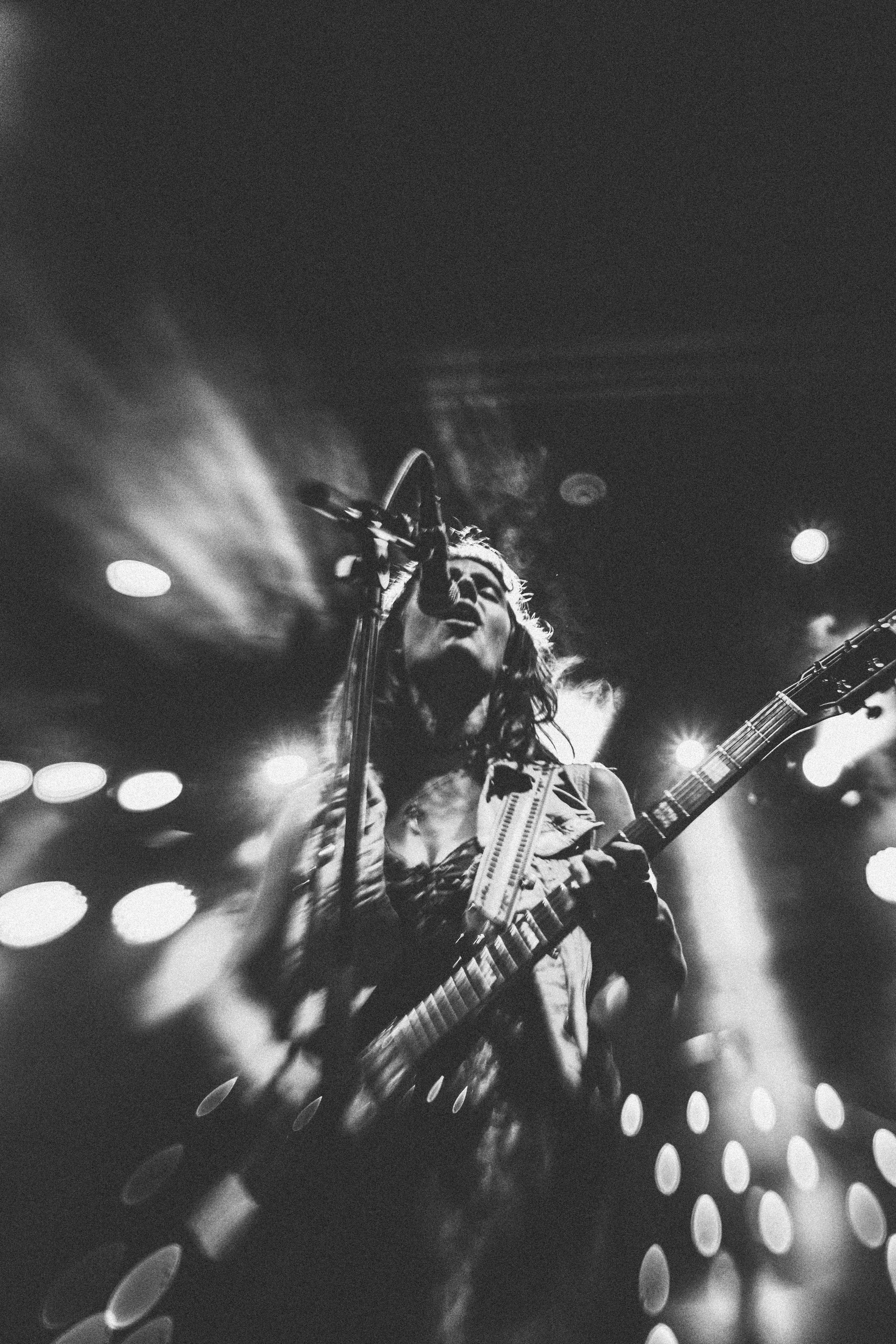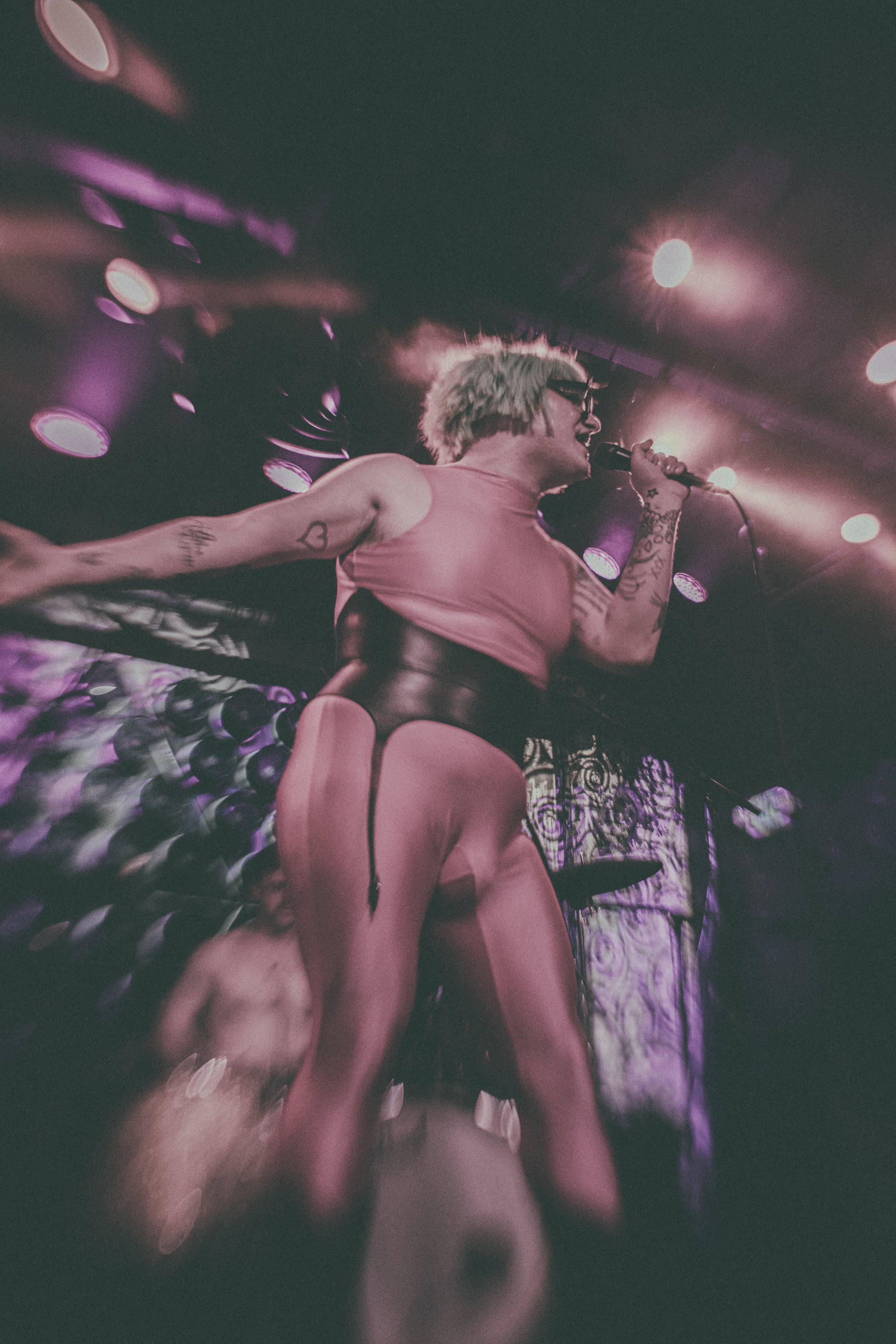By Sonia Schnee |Posted Thursday, June 8, 2023
David Ross Lawn has been actively photographing for Jersey Indie and freelancing in concert photography and self-portraiture for years, working for bands and brands big and small. David is here to talk about their photography journey, their go-to equipment, and their editing approaches for photographing live music in their individualistic and easily-recognizable style.
What do you enjoy most about photographing concerts?
My favorite aspect of live music photography is not knowing what to expect. Concerts will always have a unique energy, presence and intention: from aspects of lighting, set design, costuming, the energy of the event always takes the shape of so many factors. Even if it’s a solo act with an acoustic guitar: the energy presented is always fresh and new. I love the storytelling aspect of live music photography: I’m not just capturing a show: I’m interpreting it and putting my own personal spin on it. As a musician myself, I love to turn off my ‘music brain’ and allow the magic of live music to give me new experiences.
Let’s talk equipment. What camera do you shoot on? What lenses?
I swear by my Canon 5D Mark IV camera body. I use it for self-portraiture on a daily basis, and I absolutely love the touch screen features, the bluetooth capabilities, the optimal dynamic range and color depths. When it comes to lenses, I typically go between Lensbaby and Canon lenses: and I’m not afraid of using camera filters as well as the Lensbaby OMNI kit wands in order to bring my personal magic to the frame. I have been having a lot of fun with the Lensbaby ‘sweet 35’ lens, as it allows me to get incredibly dreamy images, and take my time with getting the perfect shot due to it being manual focus only. When it comes to lenses I think it all depends on what your aesthetic approach is. I know a lot of photographers favor a zoom lens (for a variety of angles and frames) but for me, I’m stubborn and like to stick with prime lenses (I have 35mm, 50mm and 85mm in my bag at all times) I like to be a little photo goblin jumping from spot to spot to get the frames I want. I don’t make it easy for myself by not having zoom lenses, but I enjoy the feeling of moving to get the image, and embracing the energy of the show.
Your photos have a distinct lighting, color palette and overall aesthetic. Can you talk about that?
Absolutely! My first rule (for anybody reading that enjoys my style and wants to know more detailed information) is always shooting RAW (vs jpeg). By shooting RAW on Canon 5D Mark IV, you can almost not worry so much about overexposure and underexposure. I always use the little Grid feature on my viewfinder to ensure that my framing is exactly what I want it to be and for the good old ‘Rule of Thirds’ approach.
Aside from those prerequisites, I’m always shooting Manual Settings (vs auto). It took me a lot of walks in the woods and camera books from the local library to learn all about Aperture, ISO, Shutter Speed and all of the fundamentals, but I’m so thankful that it’s now second nature for me, because now I can have fun with it and take risks. When it comes to live music photography the settings have to be changed quickly in order to reflect what is being presented. Lighting changes are rapid, as well as quick movements on stage: it’s exciting and for beginner photographers can be incredibly daunting to adapt settings to get the best images in such conditions! The more knowledge on settings you have: the easier you will find it. It’s all experience, trial and error, and having fun!
When it comes to editing and color palette, my primary aim is to have all of my in-camera photo selections having great lighting, framing, depth of field, etc: then I bring it into Adobe Lightroom. I make my own presets, which is mostly just in the color-grading, some tone curve, etc. I took some online tutorials in editing to learn the basics, and then went off on my own with making my own presets, which speeds up my process a lot. I believe everyone should have their own presets: it makes life a lot easier and keeps the aesthetic strong and personal. I usually start with one of my presets and sometimes will create new ones for new shoots when I feel like changing it up. I’m also a fan of using film grain and Photoshop textures on top of my edited images. It always depends on what I’m shooting and how I feel at the time.
Talk us through a concert photography shoot. Do you have any go-to tips or rituals?
Certainly!
Before any shoot I make sure my bag is packed with four fully-charged batteries, an extra SD card, my lenses, my filters, and the camera with a fresh SD card. I also bring a portable charger for my phone and for the camera batteries in case I need it.
I will always make sure to finalize the start time of the first band I’m shooting: many venues permit photography for the first three songs in the photo pit: and that’s the time to get the best portfolio, so it’s always best to be prepared to be at the front pit shortly before the first band is set to go on so you don’t accidentally miss any songs or introductory moments. Some venues may still have a line outside while the opener is on, so always best to plan ahead with that!
Shooting for the first three songs is always a blessing because you don’t have obstructed views, you get to embrace the energy of the music up close, and it gives you enough time to experiment and get your shots. Always be polite and considerate of the band, the staff, and of course the other photographers around you. For me, with shooting the first three songs, I’ve learned to take my time more and not rush my way to getting photos. Take in the moment, see what I want to capture, and make my way to get those moments. It might seem like a short amount of time, but it’s definitely more than enough time to move to different sides of the photo pit, to capture what you want, and on the third song maybe bring out a prism, get some shots of the crowd, details, whatever your imagination and instinct tells you to do. Do what is unique to you and make your photoset special.
After the three songs are up, it’s time to quickly exit the photo pit area and then what you do with the rest of the time is up to you. I will usually spend some time reviewing my images, putting a star next to the ones I want to keep and deleting the ones that don’t serve the photoset. I will then make my way into the crowd and get a couple more shots from further back, just to complete the photoset. Then you get to enjoy the set before going back to the pit for the next band!
Final tips on shooting concerts?
Don’t be afraid to take risks, and never stop exploring new ways to show the world how you see it. Remember that photography is all about how ~you~ feel the music, and how you personally are experiencing it. Bands will always be more excited by unique photosets, and creative takes on their shows. I always advise folks to explore the settings on the camera, get to know their equipment and take time with it, explore color palettes, explore lighting, explore framing, and never stop exploring!


